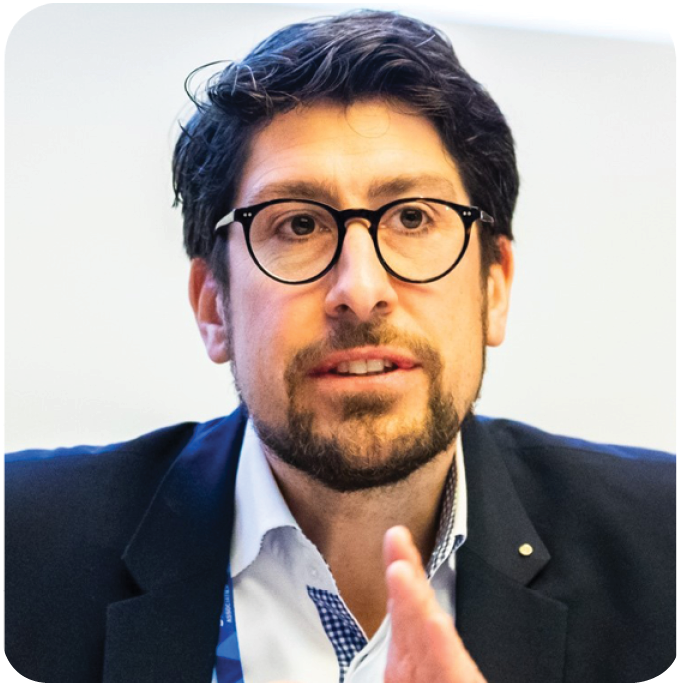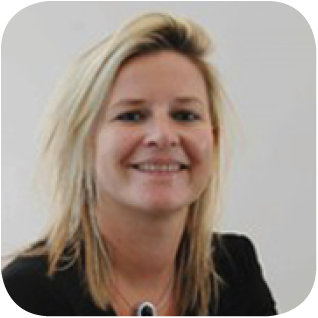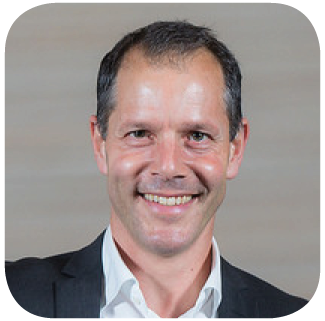23rd September 2019
Dr. Kurt Höller, Director of Business Creation at EIT Health, explains why bringing healthcare innovations to market is especially challenging for start-ups.
Kurt Höller is Director of Business Creation at EIT Health, where he manages the EIT Health Accelerator, helping to create an ecosystem where innovation can thrive.

We all want the same thing when it comes to health innovation: we want the greatest ideas that have the potential to improve lives to reach the people who can benefit, as quickly as possible. Culturally, we are a population who expect things to happen fast, especially in an age where technology affords us the opportunity to have instant, real-time access to everything from analysis of our sleep quality to diagnosis of our conditions using smartphones.
While the technology available for health applications is an ever-growing and dynamic sector, the road to the end user is often long and complex. And rightly so in most cases. We must ensure that technology delivered to patients and citizens for health conditions is effective, safe, user friendly, cost-effective and well-integrated into current health systems.
However this is no small task – particularly for start-ups or individual entrepreneurs who have ideas with great potential but who do not have the capital, experience or resources to bring their solution to the regulators and reimbursement bodies. Those developing medical technologies must ensure they have compelling clinical and health economic data, patient and clinician backing, a clear regulatory strategy, and a reimbursement model that will mean patients actually can access the technology once the relevant stages of the process have been navigated.
Challenges facing start-ups
Given all the hurdles that new med-tech solutions must clear, we should ask ourselves: do start-ups have an inbuilt competitive disadvantage?
Start-ups are, arguably, one of the most disruptive forces in technology today. We are seeing more and more bright entrepreneurs develop lean, agile and innovative solutions – and they are no longer afraid to turn their talents to the health sector.

But unlike the pharma and medtech giants, start-ups have not trodden this path before, and this provides a distinct disadvantage. Talented teams with promising ideas that could potentially have a great impact on some of our most challenging health issues, such as treating chronic disease, prevention of disease, and healthy ageing, exist, but they don’t know what is ahead of them.
The road to market is tough for such talent – comprehensive research and development, user testing and validation, resources to collate and submit for regulatory approvals, and reimbursement strategies are all required to launch a medical technology device or service in Europe. And the exact route often differs, depending on where you are planning to launch. It’s no surprise that such groundwork also comes at great cost, which is another disadvantage for start-ups.
Small start-ups and entrepreneurs rarely have the capital to bring their solution to market and must seek funding through private or public investors. One of the challenges, particularly in the earlier stages, is who will invest in a technology that hasn’t yet proven its worth with the regulators, or with clinical trials. There are of course investors who can see potential when it’s right in front of them, but many others are hesitant.
Unfortunately for start-ups, it is often very difficult to predict the obstacles that will appear on their path to the market.
EIT Health and its mission to improve lives in Europe with innovation
Here at EIT Health, we work to support promising start-ups throughout their journey, so that the best ideas have a better chance of reaching the market as quickly as possible.
 Additionally, we started doing work in 2019, as part of our EIT Health Think Tank, that aims to offer analysis of the “innovation pathway” – the pathway from idea to market. This project will bring together expertise from all stages of the pathway, across multiple European countries, to look at the challenges and opportunities for how the pathway could be improved to make it easier for innovators to bring their ideas to market.
Additionally, we started doing work in 2019, as part of our EIT Health Think Tank, that aims to offer analysis of the “innovation pathway” – the pathway from idea to market. This project will bring together expertise from all stages of the pathway, across multiple European countries, to look at the challenges and opportunities for how the pathway could be improved to make it easier for innovators to bring their ideas to market.
Technology has the potential to improve health exponentially – promoting healthy living, preventing and detecting diseases, optimising treatment, and managing chronic conditions. This has never been more important as we face substantial challenges such as an ageing population, a continuous rise in chronic disease and strained health systems. We have a responsibility to help promising innovation that arms us in the fight against such challenges to reach patients, citizens and healthcare providers.
In the blogs below, representatives of two of the start-ups we support at EIT Health explain their own experiences with confronting the unknown.
Bieke Van Gorp discusses her experience of bringing to market the first ever certified app to detect atrial fibrillation.
Bieke Van Gorp Co-Founder and COO at Belgium-based Qompium, makers of FibriCheck, won the EIT Venture Award in 2018. FibriCheck lets users measure heart rhythm simply by placing their finger on the camera of their smartphone, and it can detect atrial fibrillation and other common arrhythmias in only 60 seconds.

FibriCheck was born in 2014 with a team of only four people who developed technology that uses a smartphone app to determine whether an individual has atrial fibrillation – the most common cardiac arrythmia, affecting more than 33.5 million adults each year globally, and a major cause of stroke. As a spin-out from a hospital, the start-up developing FibriCheck knew that the clinical need was clear from the very beginning, and their good connections with the cardiology departments provided the benefit of having relatively good access to clinical data. FibriCheck has received support from several EIT Health Accelerator programmes – including Headstart, Product/Market-Fit and the European Health Catapult – and was also a winner of the EIT Venture Award in 2018.
“Although we had a relatively good theorical understanding of the innovation pathway, we quickly understood that the reality was a completely different story – for FibriCheck both the regulatory pathway and the introduction of alternative business models turned out to be complex and challenging,” said Bieke Van Gorp, Co-Founder and COO at Qompium, maker of the FibriCheck app.
“Regulations for example were not (yet) adapted for medical software-only applications, and as such regulatory standards needed to be somewhat interpreted to facilitate implementation. Furthermore, the development of medical software (in contrast to developing traditional software) was an aspect we largely underestimated. That said, certification as a medical device is a prerequisite for a commercial launch, so there is no option to ‘side-step’ this part of the pathway. Certification was a game-changer in raising capital as investors were understandably more sceptical about the return on their investment until this first ‘make or break’ hurdle had been overcome.
“Besides regulatory approvals, also implementing viable business models turned out to be an uphill fight. Of course, reimbursement is the end-goal of most digital health companies, but in reality, you cannot build your story exclusively on reimbursement. In our case, everyone speaks about prevention and realises it will be necessary to keep healthcare costs affordable for everyone, but only a few are prepared to pay today. Today, we are commercially available across Europe with differing business models. By ‘thinking outside the box’, we have built up a total user base of approximately 130 000. As a start-up venturing into health, it was, and is still, not always easy. Having access to expertise that can provide insight and guidance on the pathway is really valuable for start-ups in this space.”
Martin Steinberg talks about his journey to market for a blood test that detects prostate cancer.
Martin Steinberg is the Commercial Head of Stockholm3. He was the project leader for the STHLM3RS EIT Health Innovation Project to support the Stockholm3 test and he is currently leader for the OncoWatch EIT Health Innovation Project, which is run by the Stockholm3 team.

Stockholm3 is a blood test that identifies two times more men with aggressive prostate cancer, while also reducing the risk of conducting unnecessary prostate biopsies by 50%, as compared to current clinical practice with the PSA test. Prostate cancer is the most common form of male cancer in Europe, and latest estimates state that over 90 000 European men die from the disease each year.
Stockholm3 is in clinical use in Sweden, Norway, Denmark and Finland, and is currently being rolled-out broadly across Europe. The innovation was supported as an EIT Health Innovation Project and won the EIT Innovators Award in 2017.
“We had little or no idea about the steps in the innovation pathway when we began developing Stockholm3, and in a way I’m glad this was the case. Had we known about the journey ahead, we may not have started, and so sometimes a small amount of naivety can be a positive thing,” said Martin Steinberg of Stockholm3.
“There are many challenges along the pathway, but one of the most determinant factors is whether there is a market for your product, and who will pay. With medical innovation, you are often not selling to an individual, you are selling to a hospital or a reimbursement body, and this presents a specific set of challenges. We were fortunate with Stockholm3 in that we were able to work with a local healthcare provider, as well as with a large industry player, Thermo Fisher. This was very beneficial as these collaborations significantly accelerated time to market. We have learnt a great deal about the process from our experiences with Stockholm3, and now we are developing our second product with the added benefit of knowing much better what is ahead of us and therefore being able to accelerate our development.”